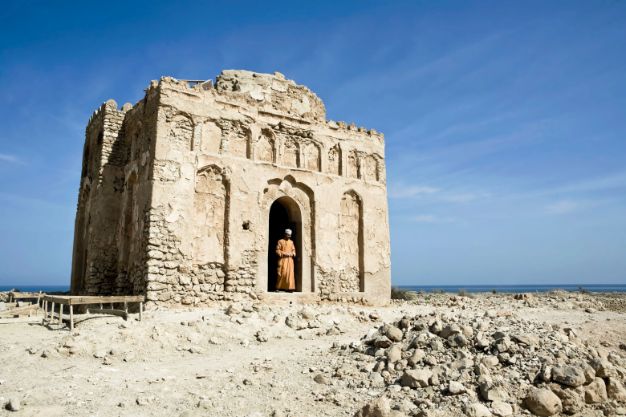Qalhat: Discovering Oman’s Timeless Maritime Legacy
A forgotten maritime gem on Oman’s coast. Its ruins whisper tales of a glorious past. Join us to capture the allure of Qalhat as a historical treasure, discover why it’s a must-visit and uncover its impact on trade, culture, and Oman’s legacy
What is Qalhat?
Qalhat, also called Galhat, was a thriving port city that once stood as a vital hub for Indian Ocean trade. A city that hummed with the energy of traders, sailors, and adventurers reached its golden age under the Hormuz kings. Ships sailed to its shores, bringing exotic goods and exciting stories. Today, it is a silent testament to its once-thriving past.
Where is Qalhat Located?
This port city is situated on the eastern coast, about 20 kilometres north of Sur. it was a key stop for ships travelling between the Persian Gulf, India, and East Africa.
How to Reach Qalhat
Always check local travel conditions before planning your trip.
- Fly into Muscat and take route 17 (Muscat-Sur Highway).
- Rent a car or hire a driver for a scenic road trip of 3-4 hours.
- To enjoy a different perspective of the Omani landscape you may catch a short flight from Muscat to Sur.
- You may opt for a guided tour from Muscat or Sur to indulge in a hassle-free adventure.
Specialties of Qalhat
This destination offers a unique mix of history, culture, and breathtaking landscapes, making it truly captivating.
- Bibi Maryam Mausoleum: This was built by Baha al-Din Ayaz for his beloved wife. The ruins stand as a UNESCO World Heritage Site. Its intricate carvings display Islamic artistry.
- Ancient City Walls: The remnants of fortifications present to us the puzzle of Qalhat’s past to appreciate the ingenuity of its builders.
- Friday Mosque: Even though much of it lies in ruins, the grand mosque’s vestige offers a glimpse into Qalhat’s rich religious past.
- Archaeological Site: It is a treasure trove of history, with pottery and artefacts from ancient trade routes waiting to be discovered.
- Maritime Legacy: Its location along the southeastern coast of Oman provides a reminder of a bustling port town facilitating trade across the Indian Ocean.
Stories and Facts about Qalhat
The history here is full of surprises! Archaeologists continuously uncover new clues about the city’s past.
- Marco Polo’s Visit: The legendary Venetian explorer, called it a “noble city.”
- Ibn Battuta’s Account: The renowned Moroccan traveller praised Qalhat’s beauty and importance in his writings.
- Frankincense Trade: This fragrant treasure made it a hub of ancient trade.
- Portuguese Destruction: The Portuguese invasion in 1508 marked the beginning of its decline.
- UNESCO Recognition: In 2018, Qalhat was inscribed on the list, acknowledging its historical significance.
- Secrets preserved by the ocean: Recent underwater explorations have unveiled submerged structures, hinting those parts of this ancient city to rest beneath the sea.
- Hormuz Connection: It was the secondary capital for the Hormuz kingdom, which controlled much of the Persian Gulf trade.
Tips for Visitors
- Remember to pack to protect yourself from the scorching Omani sun.
- Dress modestly, loose-fitting clothing is ideal for the hot weather.
- Stay hydrated and use comfortable footwear.
- A guided tour is ideal when it comes to safety, respectful photography and keeping up with guidelines.
- Do not forget Travel Insurance.
This forgotten city awaits curious explorers like you. To make your visit truly seamless and enriching, consider exploring Qalhat with Dunes Adventures & Tours. Their expertise ensures you won’t miss a single detail of Qalhat’s story, while their personalized services make travel stress-free and enjoyable. Contact them at +968 24992674 or via info@dunesadventures.com to plan your trip and unlock the timeless charm of Qalhat. You will feel a connection to the enterprising merchants, skilled sailors, and diverse cultures that thrived here centuries ago. Prepare to be captivated by its unique charm. Let history come alive with every step!



